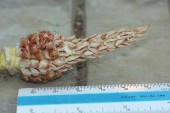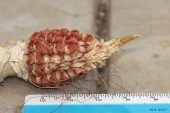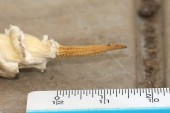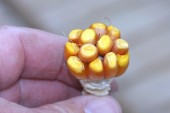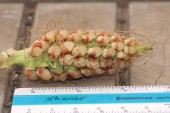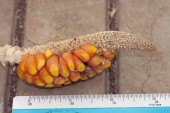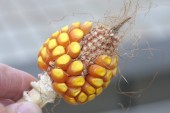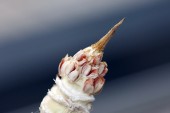Published 9 Dec 2008
URL: http://www.kingcorn.org/news/articles.08/ArrestedEars-1209.html
Arrested Ears Resulting From Pre-Tassel Applications of Pesticide & Spray Additive Combinations
R.L. (Bob) Nielsen, Kiersten Wise, Corey Gerber
Agronomy Dept., Botany & Plant Pathology Dept.
Purdue Univ., West Lafayette, IN 47907-2054
Email address: rnielsen
at purdue.edu
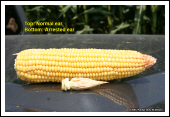
![]() ack
in late summer of 2007, arrested ear development was reported by a number
of corn growers in Illinois and Indiana (Nafziger,
2007; Nielsen,
2007b). The severity of the arrested ear symptoms varied both within and
across affected fields (Nielsen,
2007b). The appearance of the arrested ear was distinctly different than
that commonly associated with blunt ear syndrome or "beer can" ears
(Nielsen,
2007b).
ack
in late summer of 2007, arrested ear development was reported by a number
of corn growers in Illinois and Indiana (Nafziger,
2007; Nielsen,
2007b). The severity of the arrested ear symptoms varied both within and
across affected fields (Nielsen,
2007b). The appearance of the arrested ear was distinctly different than
that commonly associated with blunt ear syndrome or "beer can" ears
(Nielsen,
2007b).
Click on an image to open a larger version. To close the popup window, click on the larger image.
The most common thread linking affected fields was that the arrested ears were occurring in fields that had been previously treated with various herbicides, fungicides, insecticides, and/or assorted spray additives during the week or two preceding pollination. The most dramatic comparisons with arrested ear symptoms occurred primarily where foliar fungicides had been applied prior to tasseling versus areas left as untreated checks for yield comparisons.
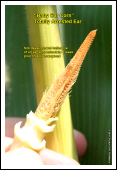 The
symptoms of the arrested ears suggested that the causal factor occurred near
or soon after the completion of ear size determination. In some cases, the
arrested ears appeared similar to baby ears of corn often found in restaurant
salad bars. Ear size determination was essentially complete and the beginning
of silk development was evident near the butt of the cob. Further development
of the ear had simply been arrested.
The
symptoms of the arrested ears suggested that the causal factor occurred near
or soon after the completion of ear size determination. In some cases, the
arrested ears appeared similar to baby ears of corn often found in restaurant
salad bars. Ear size determination was essentially complete and the beginning
of silk development was evident near the butt of the cob. Further development
of the ear had simply been arrested.
In response to these reports, we were interested in the prospect of intentionally reproducing the arrested ear symptoms in the field. Therefore, we established a preliminary trial at the Purdue University Crop Diagnostic Training & Research Center in west-central Indiana in 2008, with the purpose of evaluating the effects of a number of pesticides and spray additives on ear development. Three fungicides, one insecticide (I), a commercial non-ionic surfactant (NIS), crop oil concentrate (COC), glyphosate (GLY), ammonium sulfate (AMS), and 2,4-D were applied in various combinations over the canopy of corn on July 18th, at approximately the V14 stage of leaf development (approximately 5 ft tall and 1 - 2 weeks prior to tasseling).
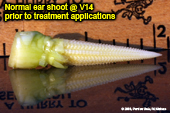 The
V14 stage of development was chosen because it best represented the reported
timing of fungicide applications in the 2007 problem fields. Ear size determination
was essentially complete (Nielsen,
2007a) and silk elongation was beginning to occur near the butt end of
the cobs. The tips of the ear shoots were visible in the leaf axils in a majority
of the plants. Ear size determination was essentially complete at this stage,
with rows of ovules visible nearly to the tip of the ear (image to the right).
The
V14 stage of development was chosen because it best represented the reported
timing of fungicide applications in the 2007 problem fields. Ear size determination
was essentially complete (Nielsen,
2007a) and silk elongation was beginning to occur near the butt end of
the cobs. The tips of the ear shoots were visible in the leaf axils in a majority
of the plants. Ear size determination was essentially complete at this stage,
with rows of ovules visible nearly to the tip of the ear (image to the right).
The foliar treatments were applied with a CO2-pressurized backpack sprayer using a water carrier volume of 15 gpa to the two center rows of each 4-row demonstration plot. The same carrier volume was used for each treatment. Each pesticide or spray additive was applied at concentrations consistent with the respective labeled rates. The applications of glyphosate and 2,4-D were clearly off-label relative to stage of crop development, but nevertheless are known to be made occasionally by growers.
Each fungicide was applied alone, with COC, with NIS, with insecticide, with insecticide + COC, with insecticide + NIS, with insecticide + NIS + glyphosate, or with insecticide + NIS & glyphosate + AMS. Other foliar treatments were glyphosate alone, glyphosate + AMS, glyphosate + 2,4-D, 2,4-D alone, NIS alone, COC alone, and AMS alone.
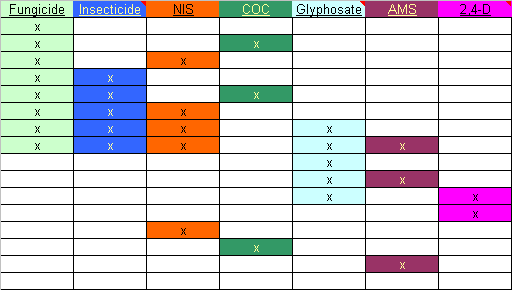
Fig. 1. Foliar-applied treatment combinations.
Ear Symptoms
Five days after the foliar treatments were applied, several random ear shoots were removed from plants in plots where NIS was included in the treatment. It was apparent that the surfactant had penetrated to the inner husk leaves of the ear shoot and to the upper end of the young cob itself. What was most interesting was that the plant tissue at the upper end of the cob (ovules and glumes) had begun to dissolve or were otherwise physically damaged. Three weeks after the foliar applications, it was clear that arrested ear development had occurred in some of the treatments. The physical damage to the cob tissue was clearly evident at this time.
Click on an image to open a larger version. To close the popup window, click on the larger image.
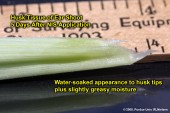
![]()
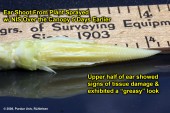
![]()
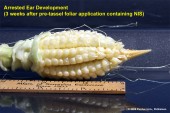
![]()
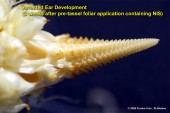
Images taken 5 and 21 days after treatment applications.
In mid-October, mature ears from 20 consecutive plants were removed and dried on greenhouse benches. Varying degrees of severity of arrested and abnormal ear development occurred across the treatments in the demonstration plots. Each ear was visually rated (yes/no) for abnormal ear development and severe arrested ear development.
Measurements were taken for length of total cob, the arrested portion of a cob, and the abnormal portion of a cob. Numbers of kernel rows and kernels per row were counted and recorded. Total kernels per ear were calculated from the row and kernels/row numbers. Where kernel set was jumbled or simply sparse, total kernel number was counted for the entire ear. Each ear was shelled and total kernel weight per ear measured, from which 1000 kernel weights were calculated. The results that follow are summarized over the three fungicides where applicable.
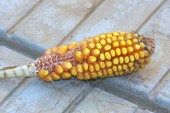
![]()
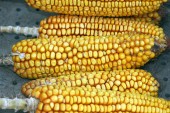
![]()
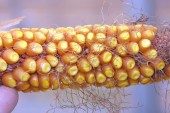
![]()
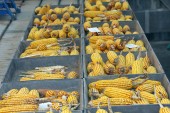
Images illustrating range of ear symptoms following hand harvest of mature
ears.
Fungicide Combinations
Neither fungicides alone or in combination with just an insecticide resulted in any severely arrested ears (Fig. 2). However, the addition of COC or NIS to fungicides alone or fungicide + insecticide resulted in a frequency of severely arrested ears ranging from 3 to 35%. The further addition of glyphosate with a fungicide-insecticide-NIS combination resulted in 60% or greater arrested ears.
The range in frequency of arrested ears displayed in Fig. 2 was similarly reflected in the average length of cob among the various foliar treatments relative to the control treatment. Reductions in cob length ranged from 6 to 48% with the application of the various foliar pesticide and additive combinations (Fig. 3).The short cobs displayed in Fig. 3 were similarly reflected in fewer number of kernels per ear among the various foliar treatments relative to the control treatment (Fig. 4). It was interesting to note that although no severely arrested ears were documented in the [fungicide alone] or [fungicide + insecticide] treatments (Fig. 2), fewer kernels per ear were recorded for those treatments relative to the control (Fig. 4) which may be a reflection of the fact that these treatments exhibited minor degrees of ear abnormalities (Fig. 5).
Herbicides and Spray Additives
Severely arrested ears also occurred in some of the foliar herbicide or spray additive treatments (Fig. 6). The treatments [glyphosate + 2,4-D], [NIS alone], [COC alone], and [AMS alone] resulted in frequencies of severely arrested ears ranging from 5 to 40%. The relationship with average cob length is obvious for the [NIS alone] treatment (Fig. 7), but cob length was noticeably shorter for a number of the other treatments as well. The relative cob lengths correlated rather well with the relative numbers of kernels per 20 ears (Fig. 8), although the [glyphosate + AMS] treatment seemed to have unusually low kernel numbers (Fig. 8) given the absence of severely arrested ears (Fig. 6). However, 100% of the ears from the [glyphosate + AMS] treatment were rated as "abnormal" in the sense that all the ears exhibited jumbled kernel set (embedded image in Fig. 9) .
Bottom Line?
The results from this preliminary trial indicate that certain combinations of foliar pesticides and spray additives applied at approximately growth stage V14 have the potential to arrest or otherwise deform ear development in corn. The data suggest that spray additives such as non-ionic surfactants and crop oil concentrate may contribute strongly to the potential for such damage.
Further research is needed to better understand the nature and mechanism of the causal factor(s) that contribute to arrested or malformed ear development. We intend to establish more comprehensive field trials in 2009 to more thoroughly investigate the effects and interactions of pre-tassel foliar applied pesticides and spray additives on ear development of corn.
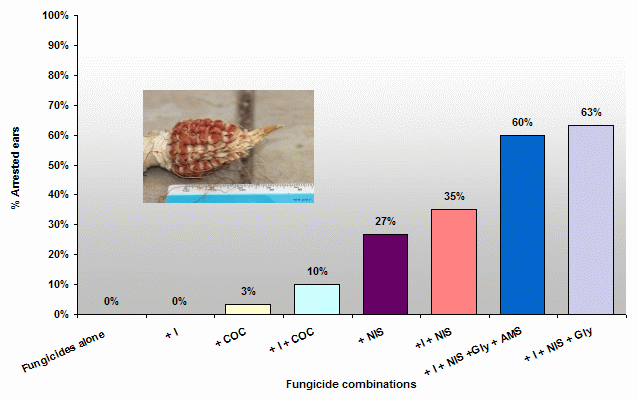
Fig. 2. Percent severely arrested ears associated with foliar applications
of fungicides alone or in combination with insecticides,
herbicides, and spray additives over the canopy of corn at the V14 stage of
development. The displayed values are averages
across the three fungicides used in the trial.
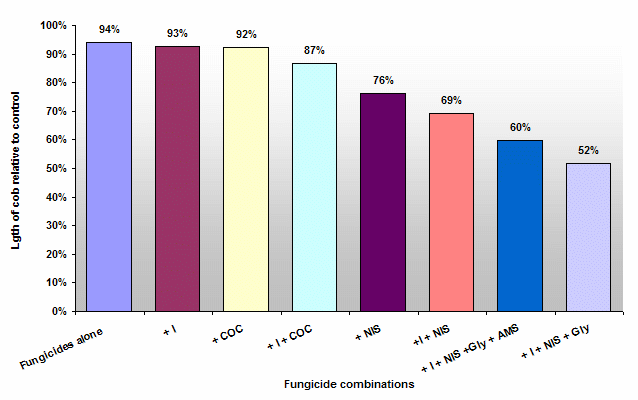
Fig. 3. Average length of cob relative to the control treatment (no foliar
application) associated with foliar applications of fungicides alone or in
combination with insecticides, herbicides, and spray additives over the canopy
of corn at the V14 stage of development. The displayed values are averages
across the three fungicides used in the trial.
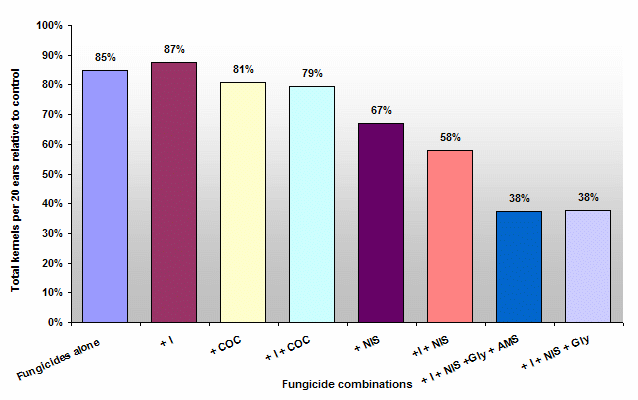
Fig. 4. Total number of kernels per 20 ears relative to the control treatment
(no foliar application) associated with foliar
applications of fungicides alone or in combination with insecticides, herbicides,
and spray additives over the canopy of corn
at the V14 stage of development. The displayed values are averages across
the three fungicides used in the trial.
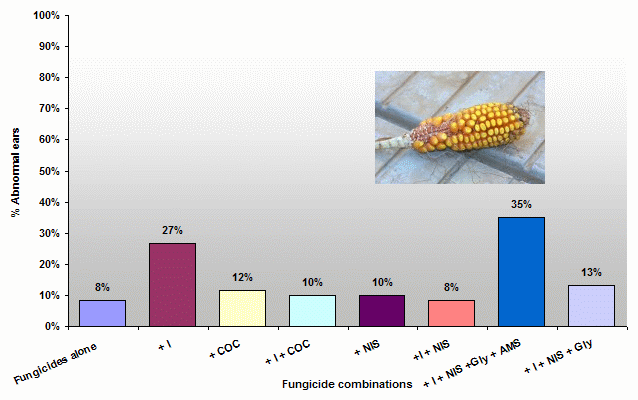
Fig. 5. Percent abnormal ears associated with foliar applications of fungicides
alone or in combination with insecticides,
herbicides, and spray additives over the canopy of corn at the V14 stage of
development. The displayed values are averages
across the three fungicides used in the trial.
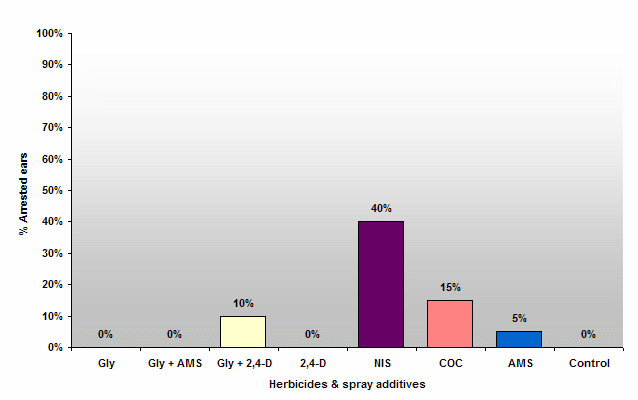
Fig. 6. Percent severely arrested ears associated with foliar applications
of two herbicides and several spray additives over
the canopy of corn at the V14 stage of development.
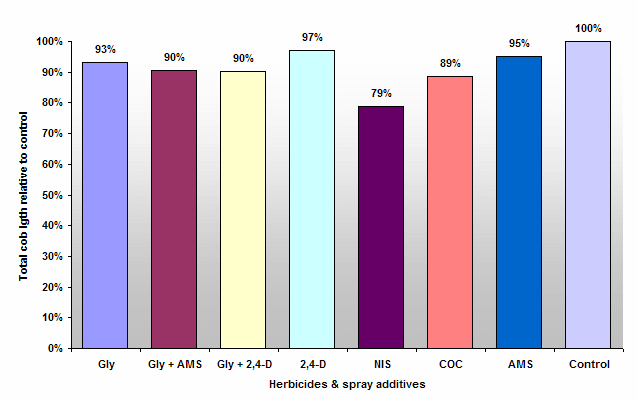
Fig. 7. Average length of cob relative to the control treatment (no foliar
application) associated with foliar applications of two
herbicides and several spray additives over the canopy of corn at the V14
stage of development.
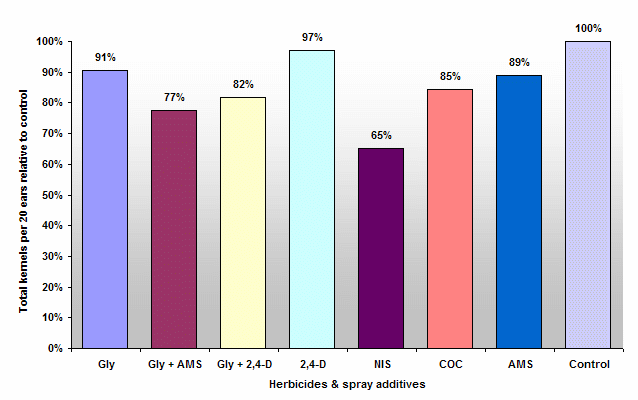
Fig. 8. Total number of kernels per 20 ears relative to the control treatment
(no foliar application) associated with foliar
applications of two herbicides and several spray additives over the canopy
of corn at the V14 stage of development.
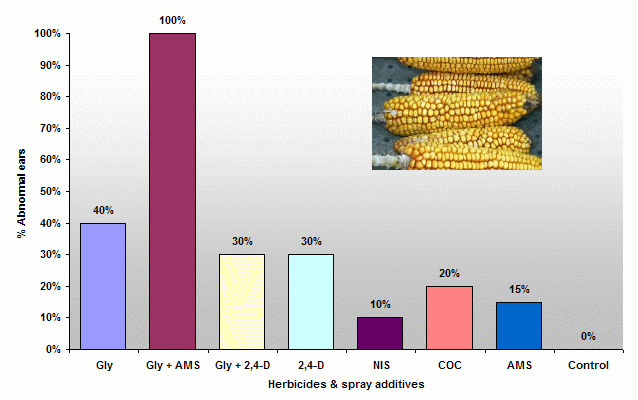
Fig. 9. Percent abnormal ears associated with foliar applications of two herbicides
and several spray additives over the
canopy of corn at the V14 stage of development.
Related References
Nafziger, Emerson. 2007. Unexpected Problems of Corn Ear Development. The Bulletin, Univ. of Illinois. [on-line]. Available at http://www.ipm.uiuc.edu/bulletin/article.php?id=836 (URL accessed 12/1/08).
Nielsen, R.L. (Bob). 2007a. Ear Size Determination in Corn. Corny News Network, Purdue Univ. [on-line]. Available at http://www.kingcorn.org/news/timeless/EarSize.html (URL accessed 12/1/08).
Nielsen, R.L. (Bob). 2007b. Symptomology of Arrested Ear Development in Corn. Corny News Network, Purdue Univ. [on-line]. Available at http://www.kingcorn.org/news/articles.07/ArrestedEars-0904.html (URL accessed 12/1/08).

